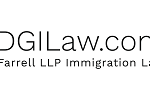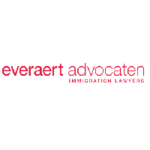-
What are the relevant government entities relating to immigration in your jurisdiction?
The Department of Homeland Security (DHS) overseas several agencies responsible for U.S. immigration and enforcement, including U.S. Citizenship and Immigration Services (USCIS), Immigration and Customs Enforcement (ICE), and Customs and Border Protection (CBP). USCIS overseas lawful immigration to the U.S. and is responsible for the granting of U.S. citizenship, approving all immigrant and non-immigrant petitions, authorizing permission to work in the U.S., issuing extensions of stay, and the changing or adjustment of status while in the U.S., among other duties. ICE enforces immigration laws. CBP patrols U.S. borders and inspects individuals and items at U.S. ports of entry.
The Department of State (DOS) adjudicates visa applications, issues visas from more than 250 U.S. missions around the world and publishes a monthly Visa Bulletin announcing the availability of immigrant numbers and indicating when immigrant visa applicants are eligible to apply for a green card based on their “priority date.” The Department of Labor (DOL) ensures that employers are paying the proper wages and is responsible for adjudicating prevailing wage determinations and Labor Condition Applications for certain temporary foreign workers, as well as PERM labor certifications for certain permanent foreign workers.
-
What are the options available for sponsor-based employment in your jurisdiction and timelines involved in securing a work permit?
Employment-based visas are categorized as non-immigrant (temporary) or immigrant (permanent residency). Non-immigrant employer-sponsored visas include the following:
The H-1B visa for a specialty occupation requires theoretical and practical application of highly specialized knowledge and a bachelor’s degree (or higher degree) in a specific field. Individuals with specific expertise and significant professional experience demonstrating progressively increasing levels of responsibility may seek equivalency evaluations to fulfill the educational requirements. The government caps the number of new H-1B petitions issued per year. Petitioners must submit an online registration during a designated registration period. USCIS conducts a randomized lottery selecting the number of petitions within the cap. The petitioner may file full H-1B petitions only for those selected. By regulation, the earliest date petitioners may file an H-1B petition is April 1 for candidates who would begin work in H-1B status on or after Oct. 1 of the same calendar year. USCIS processing may take several months for H-1B petitions, although they offer a premium processing service that reduces the processing time to 15 business days from the time of filing.
H-2A and H-2B visas are for individuals from designated countries to fill temporary or seasonal agricultural (H-2A) or non-agricultural (H-2B) jobs for which U.S. workers are not available. H-2B visas are subject to numerical caps.
The L-1 visa for intracompany transfers is available to individuals who, within the three preceding years before entry to the U.S., have been employed outside of the U.S. continuously for at least one year in a managerial, executive, or specialised knowledge capacity, and who will be employed by a branch, parent, affiliate, or subsidiary of that same employer in the U.S. in either a managerial or executive role (L-1A visa), or specialized knowledge capacity (L-1B). Processing times vary by consulate and nationality, but for those companies who have previously registered their corporate relationship with USCIS, L-1 visas are typically issued in three to 10 days from the filing. Where the corporate relationship has not been registered, the processing time is several months, although a premium processing service is offered that reduces the processing time to 15 business days from the time of filing.
The O-1 visa is available to individuals with an extraordinary ability in the sciences, education, business, athletics, or the arts, or who have a demonstrated record of extraordinary achievement in the motion picture or television industry. Applicants generally, will be required to prove that they have extraordinary talent and skill, they are renowned in their field, and they must be coming to the U.S. to continue work in the area of extraordinary ability or achievement. USCIS processing may take several months for O-1 visas, although they offer a premium processing service that reduces the processing time to 15 business days from the time of filing.
Certain nationals have additional visa options. Citizens of Canada or Mexico may obtain a TN visa based upon a qualifying profession listed in the US-Canada-Mexico Trade Agreement (formerly NAFTA). Specialty occupation visas are earmarked for nationals of Australia (E-3 visas) and Chile and Singapore (H-1B1 visas). Annual caps apply to E-3 and H-1B1 visas, but the caps are rarely met.
Immigrant visa categories include: EB-1 visas for persons of extraordinary ability, outstanding professors or researchers, or multinational executives or managers; EB-2 visas for professionals holding advanced degrees and persons of exceptional ability; EB-3 visas for skilled workers, professionals and unskilled workers; EB-4 visas for certain special immigrants; and EB-5 visas for investors. Processing times vary widely based on the qualifying category.
-
What are the primary options available for unsponsored work and investment in your jurisdiction?
E-1 Treaty Trader visas are available to executives, managers, or specialists who are nationals of a country in a trade agreement with the U.S. E-2 Treaty Investor visas are for nationals of countries in a treaty with the U.S. who have invested, or are in the process of investing, a substantial amount of capital in a real and operating commercial enterprise in the U.S.
Certain immigrant visa categories do not require employer sponsorship, including EB-1A visas for persons of extraordinary ability, EB-2 National Interest Waivers (NIW), and EB-5 investor visas.
-
What are the requirements for becoming a sponsor of employment-based migrants and what are the role and reporting duties of sponsors?
Sponsoring a foreign national for an H-1B, H-1B1 or E-3 visa requires preliminary approval from the DOL. The sponsoring company must file a Labor Condition Application (LCA) for Non-immigrant Workers, attesting that the employee will be paid the prevailing wage for their position, and that the employer will comply with other legal obligations.
The employer must post the LCA for at least 10 days. The LCA Public Access File (PAF), including the LCA and supporting documents, must be maintained at the H-1B or E-3 worker’s actual place of employment, or at the company’s principal headquarters. The H-1B or E-3 worker must be provided with a copy of the certified LCA no later than the first day that they report to work. DOL regulations also require the employer to provide a summary of benefits available to H-1B and E-3 workers in order to demonstrate that H-1B and E-3 workers are afforded access to the same benefits as similarly employed U.S. workers.
For most immigrant categories, the employer is required to go through the DOL’s permanent labor certification (PERM) process, which includes recruiting test of the labor market to ensure that U.S. workers are not available for the position. If all requirements are met, the DOL will issue a PERM certification and the employer may then submit Form I-140 Immigrant Petition for Alien Worker with USCIS. Certain qualifying immigrants can petition for themselves under limited circumstances. EB-1 workers do not require Labor Certification, and EB-2 workers may request a National Interest Waiver on the basis that waiving Labor Certification is in the national interest of the U.S.
Employers should regularly conduct internal compliance checks to make sure records are up to date and employment and compensation is consistent with labor condition applications. Employers may receive random, unannounced inspections by USCIS, ICE and DOL officials to verify compliance with immigration and labor policies.
-
Are applications filed electronically, or paper base? Is a physical visa/work permit document issued or is an electronic approval issued?
Some immigration applications may be filed electronically at www.uscis.gov, such as an application for naturalization, and some forms of employment authorization. Other immigration applications must be mailed to a USCIS office or lockbox, a secure facility the government uses to collect applications and fees. Employees receive a physical visa or employment authorization document.
-
Is an in-person attendance/interview required as part of the visa/work permit application process? Is an individual required to enrol their biometrics (digital photo, fingerprint scan) as part of the visa/work permit process?
Unless eligible for an interview waiver, visa applicants must schedule an interview at the U.S. Embassy or Consulate, generally in the country of citizenship or where they live. They may interview at any U.S. Embassy or Consulate, but it may be difficult to qualify for a visa outside of their place of permanent residence or citizenship. At a biometrics appointment, digital fingerprint scans and photos are taken. The applicant, spouse and any qualified unmarried children accompanying them must participate in the interview.
Most types of filings made in the U.S. do not require an interview or biometrics, but it depends on the specific benefit being requested. If applying for a work permit (i.e., employment authorization document) in the U.S., applicants may need to provide their biometrics at a USCIS Application Support Center (ASC) as part of their application process.
-
What persons qualify as dependants? Can dependants work based on their dependant visa status? Are there any restrictions?
Dependents include a same- or opposite-sex spouse and unmarried children under the age of 21. Some visa categories allow dependents to apply for employment authorization documents (EADs). Spouses of certain H-1B workers who have a pending permanent residency application may apply for an EAD. Spouses of L-1 and E visa holders are eligible for work authorization if they have a valid Form I-94 for L-2S, E-1S, E-2S or E-3S status, while spouses of O-1 and TN visas are not authorized to work. Dependents holding EADs are not restricted, but their work authorization is tied to the principal’s visa status and their continued dependent relationship.
-
What is the general time frame and processes for obtaining permanent residence and citizenship for sponsored and unsponsored business-related immigration?
To obtain employment-sponsored permanent residence, first, an employer must obtain a Prevailing Wage Determination from DOL that establishes the prevailing wage and minimum requirements for the position. Processing times for the Prevailing Wage Determination may be up to approximately 12 months. Second an employer must conduct a test of the labor market. If no qualified, willing, and available U.S workers are found for the position, then the employer may proceed to petition for Permanent Labor Certification from the DOL. The PERM certification establishes the prevailing wage and working conditions. The DOL typically approves or denies Labor Certification applications within approximately 13 months of filing, however, processing times may vary. If the DOL needs more information to make a decision, it will issue an audit, and a response must be provided within 30 days. If an audit is issued, that extends the normal processing times. After the Labor Certification is approved, the employer has 180 days to file a Form I-140 Petition for Immigrant Worker with USCIS. Currently, Form I-140 processing ranges from 15 business days to 16 months, depending on the service (premium or standard processing), and timeframes are updated regularly on the USCIS website.
If the applicant is applying for the immigrant visa abroad, USCIS forwards approved petitions to the National Visa Center, which holds petitions until a visa number becomes available. From there, the time frame for obtaining permanent residence is determined by the Visa Bulletin, a publication of the DOS that shows eligible visa numbers for the coming month. Availability of a visa number depends on the priority date, immigrant preference category, and country of birth of the applicant. Those factors might allow applicants to apply for a green card immediately, or require them to wait for several months, or even years, before they are eligible to apply.
If the applicant is applying for permanent residence in the U.S., when the applicant’s priority date is current in the Visa Bulletin, the Form I-485 Application for Permanent Residence is filed with USCIS.
After five years as a permanent resident of the U.S., an immigrant may apply for citizenship, though special circumstances can shorten this wait time. To apply for citizenship, an applicant completes Form N-400 with supporting documentation, may be required to attend a biometrics appointment, attends an interview, and takes a citizenship test. The applicant must be able to read and write English and take an oath of allegiance to the U.S.
-
What productive type activities can a business visitor undertake and for how long?
Business visitors enter the U.S. on a B-1 Business Visitor visa or under the Visa Waiver Program. B-1 Business Visitor visas are for individuals intending commercial or business activities, who have no intent to abandon a residence and ties outside the U.S. Business visitors are generally prohibited from engaging in productive work activities and must remain on foreign payroll. Permissible business activities include but are not limited to: attending business meetings; traveling for a scientific, educational, professional, or business convention or conference; settling an estate; negotiating a contract; and participating in short-term training as long as they are not receiving any salary from a U.S. source or engaging in any productive employment. Individuals may be admitted to the U.S. in B-1 status for a period of up to six months, and they may apply to extend their B-1 status in the U.S. in periods of up to six months, at the discretion of U.S. immigration authorities. Individuals entering the U.S. under the Visa Waiver Program are authorized to visit the U.S. for up to 90 days and extensions in country are typically not possible.
-
Can remote work be carried out from your country?
Foreign nationals are not allowed to work remotely in the U.S. for an employer located abroad without work authorization. For H-1B beneficiaries, remote work can be carried out within the U.S. but it must comply with the related Labor Condition Applications(s). PERM Labor Certifications are also based on geographic locations. If a worker performs remote work form a geographic area different than was specified in the LCA or PERM, the employer must generally refile those documents and may be obligated to fulfil different wage requirements.
-
Are there any productive work / revenue generating activities that can be carried out as a visitor and without the need for a work permit? If so, what activities and for how long?
Visitors who enter the U.S. on a Business B-1 Visa, or citizens of countries participating in the Visa Waiver Program, may conduct certain limited temporary business in the U.S. such as:
- Attending business meetings or consultations
- Attending a business convention or conference
- Negotiating contracts
Visitors who enter the U.S. on a Tourist B-2 Visa are prohibited from conducting business for pay. An individual on a Visitor Visa (B1/B2) is not permitted to accept employment or work in the U.S., except B-1 visitors may work as a personal or domestic employee in limited situations.
-
Is there a remote work or nomad visa category in your jurisdiction? If not, how likely is it that this will be implemented in future?
The U.S. does not have a remote work or nomad visa category, and there are no current proposals to introduce this type of visa.
-
How easy is it to switch visa categories/jobs/employer from within country? And/or if made redundant, can the individual regularise their stay in another capacity and what is the timeframe allowable?
A person may be able to switch jobs, employers, or visa categories depending on their visa classification. Under H-1B job “portability” rules, an H-1B employee may change jobs if the new employer files a new LCA and H-1B petition before the worker’s authorized stay expires and the worker has not otherwise violated their status. The employee can start work as soon as the new petition is filed and does not need to wait for the petition to be approved. Generally, temporary work visa holders lose their status once they are terminated. H-1B workers have a 60-day grace period to find new employment and have a new employer file a new H-1B petition on their behalf.
O-1 visa holders may change employers with prior approval; however, the new employer must file Form I-129 with USCIS. TN, E-3, and H-1B1 employees may also change employers with prior approval. E-1 and E-2 Visa holders are only permitted to change to an employer that meets the treaty requirements. Additionally, L visa holders can only change employers if the new employer meets the corporate relationship requirements of the L-1 classification. Depending on the specific circumstances, prior approval may be necessary.
-
What common issues or concerns may arise for employers under business immigration in your jurisdiction?
A common issue is the H-1B cap and obtaining an H-1B cap-subject petition within the annual numerical limits, as demand far outstrips the allotted quotas, which are routinely exceeded. For example, for FY2025 cap season, USCIS received approximately 479,000 H-1B registrations to fill the 85,000 quota. Employers whose petitions are not selected in the H-1B lottery need to find alternate visas or arrangements for these employees.
The increase in Requests for Evidence issued by USCIS seeking additional information after a petition is filed is an ongoing concern that often causes delays and uncertainty in the process. Administrative processing, whereby certain visa applications are flagged for “security concerns,” also causes lengthy delays.
The lack of short-term work authorization options is another issue that arises for employers who need employees to rotate in and out of the U.S. on short assignments.
-
Is there a fast track process / certification that business can obtain to expedite visa / permit processing?
USCIS premium processing is available for certain types of petitions and applications, including H, L, O and E-3 petitions and certain Immigrant Worker Petitions. For an additional fee that varies based on the application or petition type, premium processing guarantees a USCIS response (such as approval, denial, RFE or other notice) within 15, 30, or 45 business days, depending on the application or petition type.
USCIS has continued to expand premium processing to additional types of petitions and applications, including non-immigrant work visa petitions and associated dependent applications; additional employment-based preference categories of immigrant petitions; non-immigrant change/extension of status; and applications for employment authorization documents.
Where premium processing is not available, a petitioner may request USCIS to expedite adjudication, but they are decided on a case-by-case basis and require evidence of severe financial loss, emergency or urgent humanitarian reasons, or USCIS error, among other specific circumstances.
-
What are the recent trends, both political and social that have impacted your jurisdiction with regard to immigration policy and law?
The Biden administration has taken some positive steps on high-skilled immigration, including but not limited to the publication of a new Executive Order emphasizing the national significance of AI research and directing government agencies to streamline immigration procedures for non-U.S. citizens coming to the U.S. for AI and other critical technologies. The Biden administration has also created a supportive environment for National Interest Waiver (NIW) cases. USCIS revised many of its fees over the past year. The USCIS fee rule, which took effect on April 1, 2024, brought a significant increase in immigration filing fees, particularly for high-skilled categories. Additionally, USCIS raised its fees for premium processing services due to inflation. As a result, sponsoring foreign workers has become more expensive for U.S. employers.
-
Are there any new and / or anticipated changes impacting immigration law and / or policy in your jurisdiction?
According to the Spring 2024 regulatory agenda, the Biden administration aims to publish the H-1B modernization rule, adjustment of status proposal, and seasonal/temporary worker regulations by the end of 2024:
- H-1B modernization: The DHS proposed changes to H-1B specialty occupations and provisions for F-1 students. Public comments were accepted until Dec. 22, 2023, and the finalized H-1B registration selection provisions were implemented in March 2024. The DHS is still considering the suggestions received from public comments on the proposed provisions. The DHS plans to finalize the remaining provisions in one or more actions.
- Lawful permanent residence (adjustment of status procedures): The DHS is planning to introduce changes aiming to make the process of adjustment of status to lawful permanent residence faster and more efficient. The DHS plans to publish the proposal in August 2024. Once published, there will be a period for public comments.
- Schedule A: The DOL is considering updating Schedule A and opened a Request for Information period on December 21, 2023. The input period was extended until May 13, 2024, during which the public provided feedback on whether Schedule A effectively addresses current labor shortages and how the DOL can create a clear method for identifying occupations experiencing labor shortages without negatively affecting U.S. workers. The DOL aims to finish reviewing the feedback by August 2024.
- H-2 modernization: On September 20, 2023, the DHS released a proposal to modernize the H-2 programs. The goal is to reduce inefficiencies, strengthen pay protections, and address any aspects of the program that may unintentionally lead to exploitation or abuse of individuals coming to the U.S. as H-2A and H-2B workers. Comments on the proposal were accepted until November 2023, and final action is expected by November 2024.
- Changes for Nonimmigrant Workers: The DHS plans to update rules for certain nonimmigrant workers. This includes updating the employment authorization rules regarding dependent spouses of certain nonimmigrants, providing more flexibility for certain nonimmigrant workers, and modernizing the policies and procedures for employment authorization documents. These changes are expected to be published in January 2025.
The Biden administration’s proposed changes to immigration programs are at various stages of the finalization process. Proposed regulations usually undergo a period of public notice and comment, during which the public can provide feedback. Additionally, immigration policies and regulations are influenced by political factors, including the outcome of the 2024 presidential election and the potential for a Republican presidential administration.
-
How do you see technology developing and evolving to support immigration process in the future?
Technology can be leveraged by government agencies and by practitioners and employers to improve the immigration process. Initiatives that include technological innovation could transform and streamline processes by syncing systems within the agency, making online filing available for all application forms, using technological tools to facilitate communications between applicants and the agency, and eliminating paper mailings. This would make adjudications more efficient, improve timelines and increase transparency.
USCIS launched an E-Verify+ trial, a service that integrates Form I-9 with the E-Verify employment eligibility verification process. Please see below for more information.
-
What are the Right to Work requirements in your jurisdiction?
Employers must verify each new employee’s identity and that they are authorized to work in the U.S. Employers must properly fill out and retain Form I-9 for each employee, citizen or noncitizen, hired in the U.S. The employee must present to the employer proper identification and proof of work authorization from the list of acceptable documents on Form I-9, and the employer must examine the documents and certify on the form that they appear to be genuine, relate to the individual, and authorize the individual to work.
E-Verify is a web-based system maintained by USCIS that allows employers who are enrolled in the system to verify employee eligibility to work in the U.S. The system electronically matches information on the Form I-9 against records available to DHS and the Social Security Administration (SSA). E-Verify is not mandatory for all employers but is mandatory for employers (a) if state law requires it; (b) if the employer holds a federal government contract or subcontract containing a provision requiring E-Verify; or (c) if the employer is seeking to employ international students under the Optional Practical Training STEM-extension program. Employers who enroll in E-Verify are still obligated to fill out Form I-9 for every new hire in the U.S.
On June 25, 2024, USCIS launched an E-Verify+ trial, a service that integrates Form I-9 with the E-Verify employment eligibility verification process. The E-Verify+ portal enables employees to directly enter their personal information and documentation for the employer’s review and approval. USCIS expects a significant reduction in errors by allowing employees to input their own information and documentation directly.
-
What are the types of civil and criminal penalties employers may face for non-compliance with immigration rules i.e. employing an individual who does not have the Right to Work?
Committing or participating in document fraud for satisfying a requirement or benefit of the employment verification process or the Immigration and Nationality Act (INA), knowingly hiring unauthorized workers, committing document abuse, and unlawful discrimination against an employment-authorized individual in hiring, firing, or recruitment, or referral for a fee can give rise to fines and even criminal liability. Employers face civil and/or criminal penalties for Form I-9 violations. Civil fines related to the Form I-9 include monetary penalties for paperwork violations ranging from $281 to $2,789 per individual per violation.
-
Are there labour market testing requirements in your jurisdiction and if so, what do they involve?
H-1B visas are capped at 65,000 per year plus 20,000 for advanced degree holders. H-1B petitions do not require labor market testing, but employers must attest to wage obligations and that the hiring will not adversely affect U.S. workers. Employers sponsoring workers for certain employment-based permanent residency categories must conduct labor market testing via the PERM-based labor certification process. Recruitment requires job ads placed with the applicable State Workforce Agency’s website for 30 days and two print ads in Sunday papers of general circulation covering the geographical region of employment. For professional positions, the employer must place three additional ads chosen from a list of acceptable recruitment methods. During recruitment, the employer must review all resumes and keep records of candidates considered and reasons for rejections. The PERM application submitted to the DOL will require information about the employer’s recruitment procedures.
The H-2B classification is subject to an annual cap of 66,000 for the fiscal year. This allocates 33,000 for employment starting during the first half of the fiscal year (October 1 to March 31) and 33,000 for employment beginning during the second half (April 1 to September 30). There are limited exceptions to the annual cap that may apply.
The E-3 classification is restricted to an annual cap of 10,500 visas in each fiscal year. New E-3 visas become available every year on October 1, which marks the start of the government’s fiscal year. The demand for E-3 visas typically does not exceed the annual cap.
-
Are there quota requirements, restrictions or a cap on the numbers of foreign nationals hired per company in your jurisdiction?
No, but there are rules for employers deemed to be “H-1B dependent.” An employer is considered H-1B-dependent if it has:
- 25 or fewer full-time equivalent employees and at least eight H-1B nonimmigrant workers; or
- 26 – 50 full-time equivalent employees and at least 13 H-1B nonimmigrant workers; or
- 51 or more full-time equivalent employees of whom 15% or more are H-1B nonimmigrant workers.
Employers that employ 50 or more employees in the U.S., with more than 50% of these employees in H-1B, L-1A or L-1B nonimmigrant status, must submit additional fees when filing a new H-1B or L-1 petition.
-
Are there any exit procedures in your jurisdiction, if an individual is departing permanently?
The obligations of employers when terminating the employment of workers on temporary work visas will vary depending on the type of visa.
If an H or O employee’s employment is cut short before the end of their authorized stay, the employer should notify USCIS of the early termination. If an H or O employee’s employment ended for reasons other than the employee’s voluntary resignation, such as layoff or termination, the employer must offer to pay the employee’s reasonable cost of airfare to his or her home country.
For most temporary work visas, the employee may be eligible for one “grace period” per authorized validity period after the termination of their employment. The grace period may be for up to 60 consecutive days from the end of employment or until the end of the foreign national’s authorized validity period, whichever is shorter.
During this time, the foreign national remains in their immigration status but is generally not authorized for employment. The foreign national may be eligible to file a new nonimmigrant visa petition based on sponsorship through another employer, change their status to another nonimmigrant status, or depart the U.S.
-
Are there any requirements for medical certificates or vaccinations for your jurisdiction?
An in-person medical exam by an approved doctor is required for green card applicants to ensure that they do not have a condition rendering them inadmissible. The current list of required vaccinations include mumps, measles, rubella, polio, tetanus and diphtheria toxoids, pertussis, Haemophilus influenza type B, influenza, hepatitis (A and B), COVID-19, and any others recommended by the advisory committee for immunization practices.
-
Are there any language requirements for your jurisdiction?
To obtain U.S. citizenship, an applicant must demonstrate English language proficiency, which is determined by the applicant’s ability to read, write, speak and understand English and pass an English and Civics Test.
-
What are the government costs associated with a typical employment based visa?
The government filing fee for a Petition for Nonimmigrant Worker varies depending on the nonimmigrant classification. The most recent USCIS fee schedule can be checked here. If requesting premium processing, there is a fee of $2,805 for most nonimmigrant classifications. Additional fees may apply to certain employers and petitions, including an Asylum Program Fee. For example, employers with more than 25 employees sponsoring an H-1B worker must pay a $1,500 American Competitiveness and Workforce Improvement Act (ACWIA) fee. Employers with fewer than 25 employees must pay a $750 ACWIA fee. H-1B and L-1 employers may be required to also pay a $500 Fraud Prevention and Detection Fee. H-2B employers pay a $150 Fraud Prevention and Detection fee.
Employers with 50 or more employees in the U.S., with more than 50 percent of these employees in H-1B, L-1A or L-1B nonimmigrant status, must pay a $4,000 (H-1B) or $4,500 (L-1) fee for each petition.
-
Is a local contract of employment required in order to obtain a work based visa or work permit? Are there salary or other thresholds to be met?
The salary requirements and whether the employee is on local or foreign payroll depends on the visa category. Employers of H-1B and E-3 employees must meet complex wage threshold requirements and certify the proffered wages with the DOL. H-1B and E-3 employers must pay the worker the U.S. prevailing wage or actual wage, whichever is higher.
-
What are the maximum periods of stay for individuals on an employment based visa / work permit?
Each visa category has its own maximum period of stay. The maximum period for H-1B visas is six years (the initial three years plus a three-year extension). However, H-1B visa holders with a long pending or approved immigrant petition, including those who are awaiting an immigrant visa to become available, may be eligible to extend their status. It is not unusual for foreign nationals in heavily backlogged categories and countries to extend successively for a decade or more.
L-1A Intracompany Managers are allowed a maximum stay of seven years; L-1B Intracompany Specialized Knowledge employees are allowed a maximum stay of five years.
-
Does your jurisdiction allow dual nationality?
Yes. Although U.S. law does not mention dual nationality or require a person to choose one nationality or another, the DOS references dual nationality. U.S. Green Card holders should check the immigration rules in their home country prior to commencing with the U.S. naturalization process. While certain countries prohibit obtaining another nationality, others allow it for a specific timeframe. U.S. citizens may naturalize in a foreign state without risking his or her U.S. citizenship. However, individuals who acquire a foreign nationality after age 18 by applying for it may relinquish their U.S. nationality if they wish to do so, so long as they applied for foreign nationality voluntarily and with the intention to relinquish U.S. nationality.
Dual nationals must use their U.S. passport to enter and leave the U.S.
-
What are the most positive aspects of your immigration system compared to the rest of the world?
Employers do not need to go through lengthy labor market testing procedures for H-1B employees. Other types of high-skilled categories, such as L-1, O-1, TN, E-1, and E-2 are not subject to numerical limits and also do not require labor market testing. H-1B and L-1 visas are “dual intent” visas; therefore, although they are in the category of temporary work visas, an H-1B applicant may also intend to become a permanent resident and apply concurrently for permanent residency. Nonimmigrants in the U.S. are generally able to convert status or apply for permanent residency without having to leave the country and re-enter.
Foreign students in nonimmigrant F-1 status may apply for employment authorization if employed in Curricular Practical Training (CPT), Optional Practical Training (OPT) or an extended OPT program in a STEM-related field.
In most visa categories, family members have derivative status. In some categories, including L, E, and some H, spouses are eligible for work authorization and open access to the labor market without needing an employer to sponsor them.
United States: Corporate Immigration
This country-specific Q&A provides an overview of Corporate Immigration laws and regulations applicable in United States.
-
What are the relevant government entities relating to immigration in your jurisdiction?
-
What are the options available for sponsor-based employment in your jurisdiction and timelines involved in securing a work permit?
-
What are the primary options available for unsponsored work and investment in your jurisdiction?
-
What are the requirements for becoming a sponsor of employment-based migrants and what are the role and reporting duties of sponsors?
-
Are applications filed electronically, or paper base? Is a physical visa/work permit document issued or is an electronic approval issued?
-
Is an in-person attendance/interview required as part of the visa/work permit application process? Is an individual required to enrol their biometrics (digital photo, fingerprint scan) as part of the visa/work permit process?
-
What persons qualify as dependants? Can dependants work based on their dependant visa status? Are there any restrictions?
-
What is the general time frame and processes for obtaining permanent residence and citizenship for sponsored and unsponsored business-related immigration?
-
What productive type activities can a business visitor undertake and for how long?
-
Can remote work be carried out from your country?
-
Are there any productive work / revenue generating activities that can be carried out as a visitor and without the need for a work permit? If so, what activities and for how long?
-
Is there a remote work or nomad visa category in your jurisdiction? If not, how likely is it that this will be implemented in future?
-
How easy is it to switch visa categories/jobs/employer from within country? And/or if made redundant, can the individual regularise their stay in another capacity and what is the timeframe allowable?
-
What common issues or concerns may arise for employers under business immigration in your jurisdiction?
-
Is there a fast track process / certification that business can obtain to expedite visa / permit processing?
-
What are the recent trends, both political and social that have impacted your jurisdiction with regard to immigration policy and law?
-
Are there any new and / or anticipated changes impacting immigration law and / or policy in your jurisdiction?
-
How do you see technology developing and evolving to support immigration process in the future?
-
What are the Right to Work requirements in your jurisdiction?
-
What are the types of civil and criminal penalties employers may face for non-compliance with immigration rules i.e. employing an individual who does not have the Right to Work?
-
Are there labour market testing requirements in your jurisdiction and if so, what do they involve?
-
Are there quota requirements, restrictions or a cap on the numbers of foreign nationals hired per company in your jurisdiction?
-
Are there any exit procedures in your jurisdiction, if an individual is departing permanently?
-
Are there any requirements for medical certificates or vaccinations for your jurisdiction?
-
Are there any language requirements for your jurisdiction?
-
What are the government costs associated with a typical employment based visa?
-
Is a local contract of employment required in order to obtain a work based visa or work permit? Are there salary or other thresholds to be met?
-
What are the maximum periods of stay for individuals on an employment based visa / work permit?
-
Does your jurisdiction allow dual nationality?
-
What are the most positive aspects of your immigration system compared to the rest of the world?













